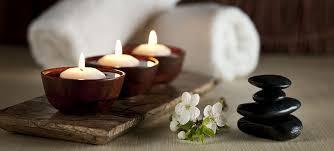Difference Between Pilates and Yoga
Pilates vs. Yoga — both are mind-body practices that improve strength, flexibility, and focus, but they differ in origin, approach, and goals.
Here’s a breakdown of the key differences:
1. Origin
Yoga: Ancient practice from India, dating back thousands of years. It has spiritual, philosophical, and physical components.
Pilates: Developed in the early 20th century by Joseph Pilates to help injured soldiers and dancers recover. It’s primarily physical and rehabilitative.
2. Focus
Yoga: Focuses on flexibility, balance, breath control (pranayama), and mental clarity. Often involves meditation and mindfulness.
Pilates: Focuses on core strength, posture, and alignment. It’s more fitness-oriented, with emphasis on controlled movements.
3. Movement Style
Yoga: Involves holding poses (asanas) and flowing through sequences (like vinyasa). Movements can be static or dynamic.
Pilates: Involves small, precise, repetitive movements, often targeting specific muscle groups. Movements are usually done on a mat or specialized equipment (like the Reformer).
4. Breathwork
Yoga: Breath is linked to energy and consciousness; different types of breathing are used for different effects (e.g. calming, energizing).
Pilates: Breath is used to support movement and engage the core, usually coordinating inhaling and exhaling with specific muscle activation.
5. Spiritual Component
Yoga: Often incorporates philosophy, meditation, and spiritual growth (though not always, especially in Western fitness contexts).
Pilates: Typically non-spiritual and secular; purely focused on physical conditioning.
6. Goals
Yoga: Improve overall balance, flexibility, mindfulness, and inner peace.
Pilates: Improve core strength, posture, stability, and rehabilitate injuries.
Which Should You Choose?
Choose Yoga if you want to increase flexibility, reduce stress, or explore mindfulness.
Choose Pilates if you're focused on core strength, posture, or injury recovery.
Summary:
| Feature | Yoga | Pilates |
|---|---|---|
| Origin | Ancient India | Early 20th century, Germany |
| Focus | Flexibility & mindfulness | Core strength & posture |
| Movement | Flowing or static poses | Controlled, repetitive movements |
| Breath | Energy and consciousness | Muscle activation and control |
| Equipment | Mat (sometimes props) | Mat, Reformer, other machines |
| Spiritual aspect | Often included | Not included |




Comments
Post a Comment